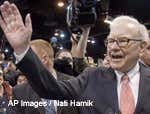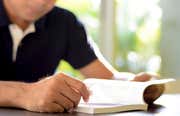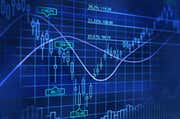Born: March 25, 1933 (Oklahoma City)
Key Positions: Hayden, Stone & Company
William O’Neil & Company, Inc.
O’Neil Data Systems, Inc.
Personal History:
Bill O’Neil studied business at Southern Methodist University before beginning his career as a stockbroker in 1958, first with Hayden, Stone & Company. O’Neil was an early proponent of computers as a tool in investment. Based on his research, O’Neil developed the CANSLIM strategy, which led him to outperforming all other brokers in his firm. At age 30, he became the youngest person to have bought a seat on the New York Stock Exchange and founded William O’Neil & Company, Inc. With this latter company O’Neil developed the first computerized database for daily securities in the early 1960s.
O’Neil continued to innovate throughout his career. He created Daily Graphs in 1972. This is a printed book of stock charts which continues to see weekly deliveries to subscribers. Then, in 1973, he founded O’Neil Data Systems, Inc. as a means of providing database publishing and printing services. For the first time in 1984, O’Neil made his research available in print form to a broader public, as he launched Investor’s Daily. The national business paper has earned a spot alongside the Wall Street Journal and other major publications, although the name of the journal was changed in 1991 to Investor’s Business Daily. As of March 2016, Investor’s Business Daily announced that it would shift to a weekly distribution and that it would focus exclusively on online content.
Investment Philosophy:
O’Neil combines a mixture of both quantitative and qualitative strategies in his performance-oriented investing approach. In brief, his investment style is to seek out only those growth stocks that have the greatest potential for swift price rises from the moment they are purchased.
O’Neil tends to buy strong and sell weak companies. His criteria for identifying potential stocks primed for growth is known as CANSLIM, an acronym as follows:
C – Current quarterly earnings per share have increased sharply from the same quarters' earnings reported in the prior year (at least 25%).
A – Annual earnings increases at a compound rate of no less than 25% (P/E is unimportant – probably in the range of 20 to 45 with these stocks) annually over the last five years.
N – New products, new management, and new highs. Stocks with a good "story."
S – Supply and demand. The less stock available, the more buying will drive up the price. Look for stocks with 10 to 12 million shares outstanding.
L – Leaders and laggards. Stick with those stocks that outperform and shed those that underperform.
I – Institutional ownership. Favor companies that are "underowned" by the top professional investors. (For related reading, see Institutional Investors And Fundamentals: What's The Link?)
M – Market direction. Buy stocks on major downturns, but avoid purchases after a decline of 10% or more gets underway.
Noteworthy Publications:
- " How To Make Money In Stocks" by William J. O'Neil (1988)
- "24 Essential Lessons For Investment Success" by William J. O'Neil (1999)
- "The Successful Investor" by William J. O'Neil (2003)
Quotes
"Since the market tends to go in the opposite direction of what the majority of people think, I would say 95% of all these people you hear on TV shows are giving you their personal opinion. And personal opinions are almost always worthless … facts and markets are far more reliable."
"The whole secret to winning and losing in the stock market is to lose the least amount possible when you're not right."
"What seems too high and risky to the majority generally goes higher and what seems low and cheap generally goes lower."
The Greatest Investors: Julian Robertson
-
 Investing
InvestingThe Greatest Stock Picker Of All Time?
Get to know some of the best stock pickers, their strategies and how they got their starts. -
 Insights
InsightsA Look At Robin Williams' Net Worth and His Estate
Learn about the net worth of the late, much-beloved comedian Robin Williams. -
 Investing
Investing10 Books Every Investor Should Read
Check out this reading list and find advice from some of the most successful investors of all time. -
 Investing
InvestingSkyworks Releases New Front Ends for IoT (SWKS)
US chipmaker releases a new product suite aimed to deliver next-gen wireless solutions for IoT markets such as connected homes, industrial automation, etc. -
 Investing
InvestingInstitutional Investors And Fundamentals: What's The Link?
Big-money sponsorship might make a company look good, but it's not always a reliable gauge of stock quality. -
 Investing
InvestingHow to use insider and institutional ownership
Learn why insider and institution stock ownership reveal much information about the stock. Understand what to consider when making well-informed investment decisions.



